Set on a particularly picturesque curve of the Bosphorus in Besiktas on Istanbul’s European side, Arnavutköy is one of Istanbul’s most beautiful – and most overlooked – neighbourhoods.
Not to be confused with the district of the same name (where Istanbul Airport IST is located), this Arnavutkoy is a tiny area with only a few dozen curling and climbing streets.
A melting pot of Turkish, Greek, Jewish and Armenian heritage, Arnavutkoy is famous for its wooden yalis, Ottoman-era mansions built from timber and embellished with Art Nouveau decorations.
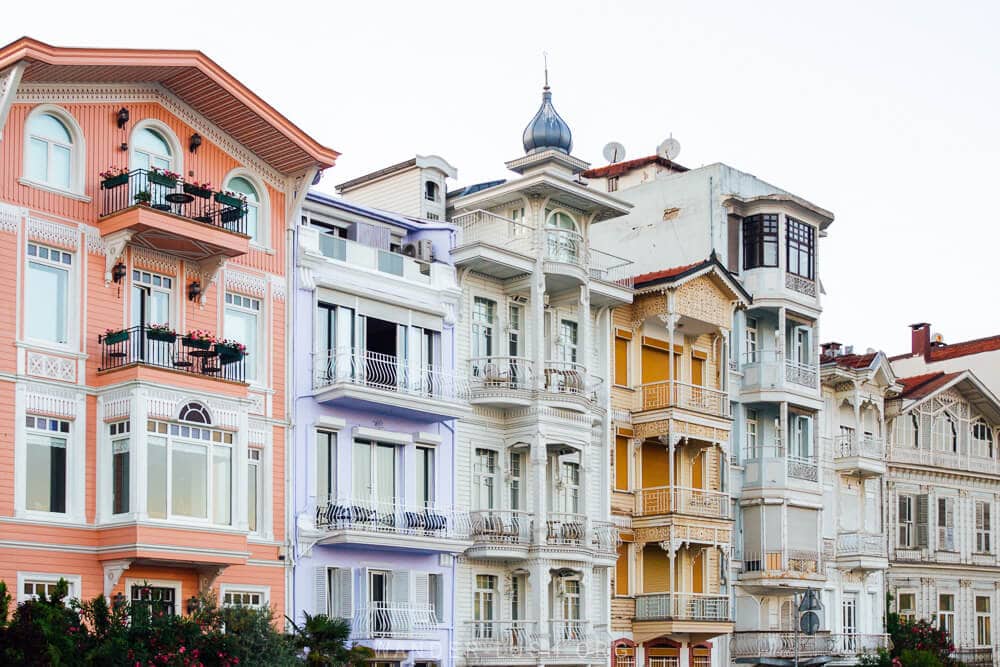


A random photo I stumbled upon online drew me to visit Arnavutkoy as part of my recent visit to Istanbul. It was a complete wildcard – but it turned out to be one of the highlights of my itinerary.
If you’re a long-time reader of this blog you’ll know that aimless wandering through pretty city streets is my idea of heaven, thus Arnavutkoy was like a dream for me!


If you’re looking to escape the rumpus of Eminonu and the fracas of Balat and explore a totally distinct, almost tourist-free part of Istanbul, then an afternoon in Arnavutkoy – which still has its village feel – might be exactly what you need.
Here is my quick guide to Arnavutkoy, Istanbul’s prettiest neighbourhood.
Please note: This post contains affiliate links, meaning I may earn a commission if you make a purchase by clicking a link (at no extra cost to you). Learn more.
Istanbul quick links
- Istanbul airport transfer: Private transfer from Istanbul Airport or Sabiha Gokcen (from $25)
- Where to stay in Istanbul: Hostel Le Banc (budget); 38 Hotel (mid-range); Hotel Empress Zoe (boutique); Ecole St. Pierre Hotel (luxury)
- Istanbul Official E-Pass: Pre-purchase online through Viator
- Skip the line: Blue Mosque & Hagia Sophia Small-Group Tour (from $40)
- Best Istanbul food tour: Taste of 2 Continents (from $100)
- Top-rated Istanbul city tour: Best of Istanbul in 1 Day (from $60)
- Turkey car hire: Find a low-cost rental on Local Rent (from 28€/day)
About Arnavutkoy
The name Arnavutkoy means ‘Albanian village’ in Turkish. As the story goes, in 1468, Sultan Mehmed II (who led multiple campaigns against the Albanians and their military leader, Skanderbeg) recruited craftsmen from Albania to pave Constantinople’s streets.
(Perhaps the lovely cobblestones in Gjirokaster caught his eye, as they did mine!)
Other sources attribute the migration of Albanian families to a scheme that sought to replenish the city’s population after Mehmed II (AKA ‘Mehmed the Conqueror’) brought Istanbul under Turkish control in 1453.

Either way, Albanians settled on this patch of Bosphorus coastline between Ortaköy and Bebek, joining the area’s historic Greek community. And so it became known as the Albanian Quarter.
At the time, Arnavutkoy was very multicultural and cosmopolitan, with Jewish and Armenian families as well. A mosque, a synagogue and a church all standing shoulder to shoulder attest to the area’s pluralism.
The hillsides, meanwhile, were draped with vineyards, orchards and strawberry fields. Famously small and sweet Ottoman strawberries are still cultivated here today, albeit in much smaller quantities.
But the thing that sets Arnavutkoy apart from other parts of Istanbul is its majestic waterside residences – tall and slender houses with florid windows, shutters and stacked balconies, all fashioned from timber and painted in a spectrum of muted peach, lilac and cream.
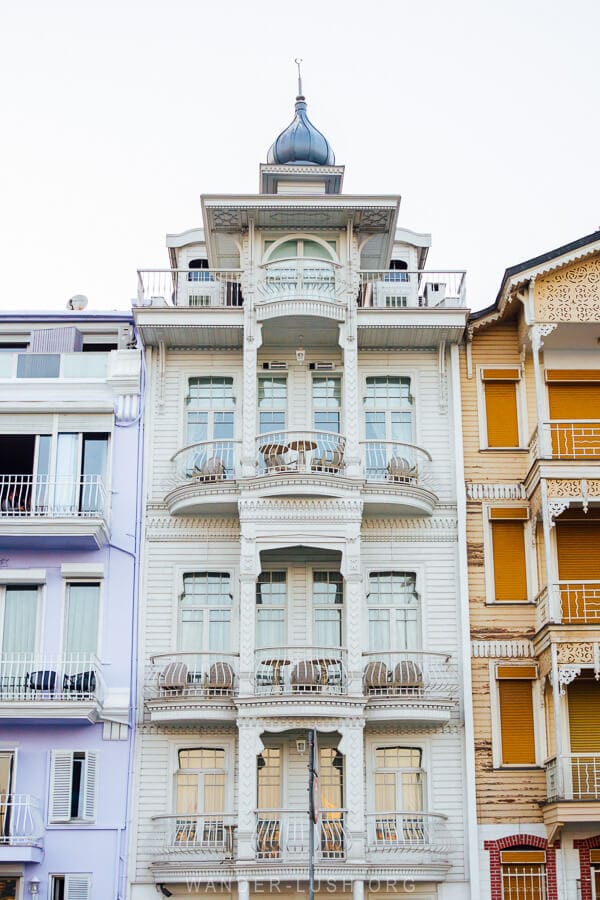

The houses are late-Ottoman in style, with Art Nouveau flourishes, but actually belonged to Greek families. By the 1970s, almost everyone with Greek or Albanian roots had emigrated away from Arnavutkoy, leaving their hauntingly beautiful houses behind. Majority were either confiscated or abandoned.
In 1863, Robert College, the oldest American school outside the States, was established in Istanbul, and Arnavutkoy was chosen as its location. Among its illustrious alumni is the famous Istanbulite, author Orhan Pamuk.
The college’s successor institution continues to operate behind the same grand, columned stone facade today.
One last thing Arnavutkoy is known for is its fish. Small boats and anglers ply the neighbourhood’s small slice of seafront and sell their booty to the many seafood restaurants that line the promenade.
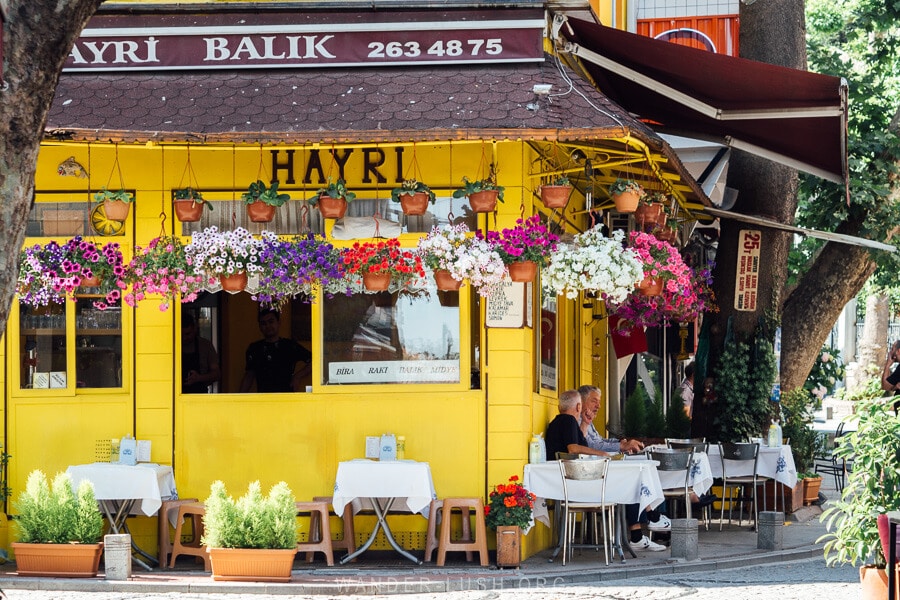
Arnavutkoy’s Ottoman-era mansions
A dozen or more of Istanbul’s finest houses can be found on Arnavutkoy’s waterfront, separated from the promenade and main road by a canal. Each one has its own boat mooring.
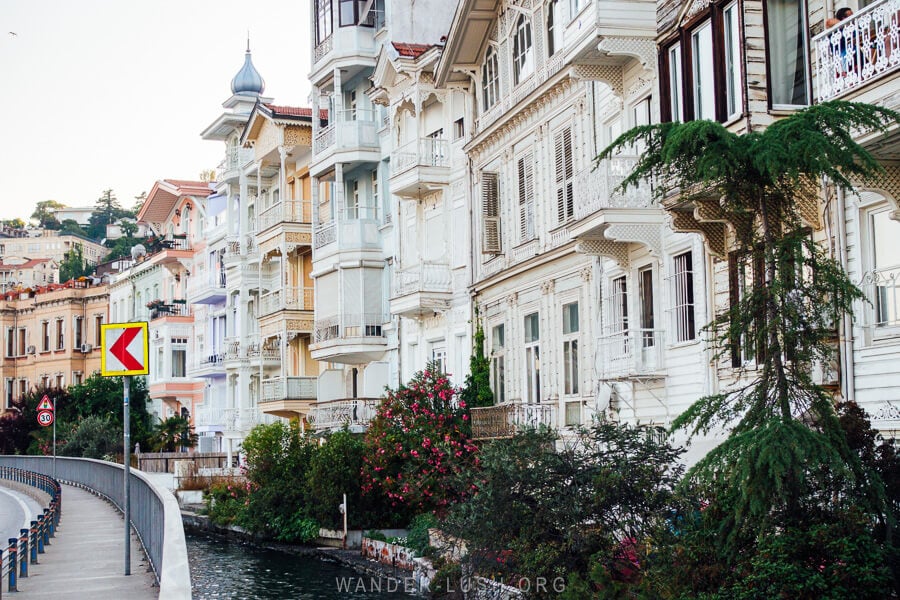
Built in the late 19th century and infused with Art Nouveau elements, they represent a fusion of Ottoman, Greek and European inclinations.
Their most impressive feature is the decorative fretwork, which beautifully compliments the use of horizontal timber for the facades. Each house looks completely bespoke, so I was surprised to learn that many of the decorative elements repeated across the blocks were actually mass-produced.

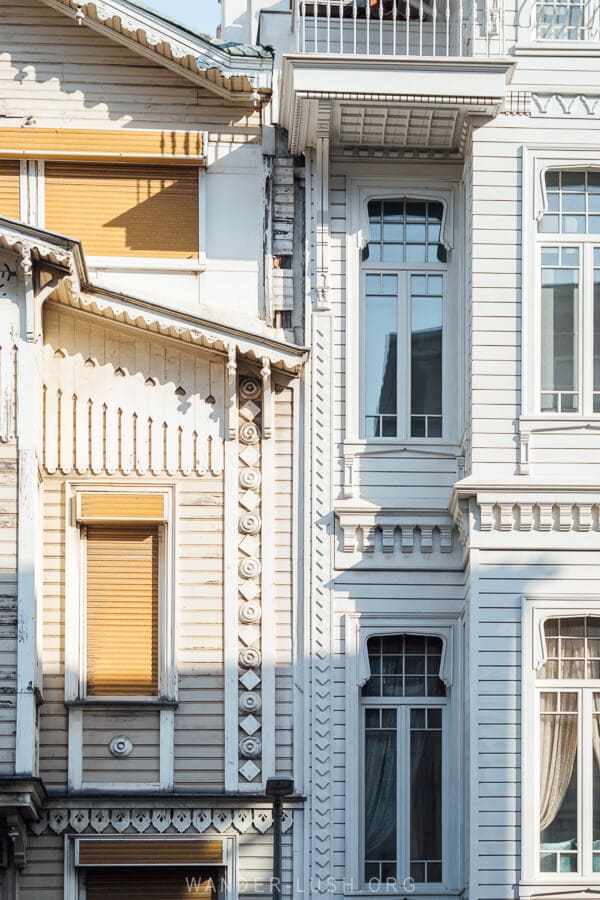
Back from the waterfront, almost every street in Arnavutkoy has its own eye-catching wooden houses in a similar style – from the mustard-yellow corner house with a peaked roof, to the more humble row houses sandwiched together and painted in subtle off-white hues. Some have chardak-style upper floors with bay windows.
While the waterfront houses that greet visitors arriving in Arnavutkoy by ferry have all been painstakingly rehabilitated, the backstreets reveal some that are works-in-progress, and several beauties that are still lying in wait for their prince to arrive.
It’s very interesting to see the contrast between the restored and weathered timber houses, especially where the two stand side by side.
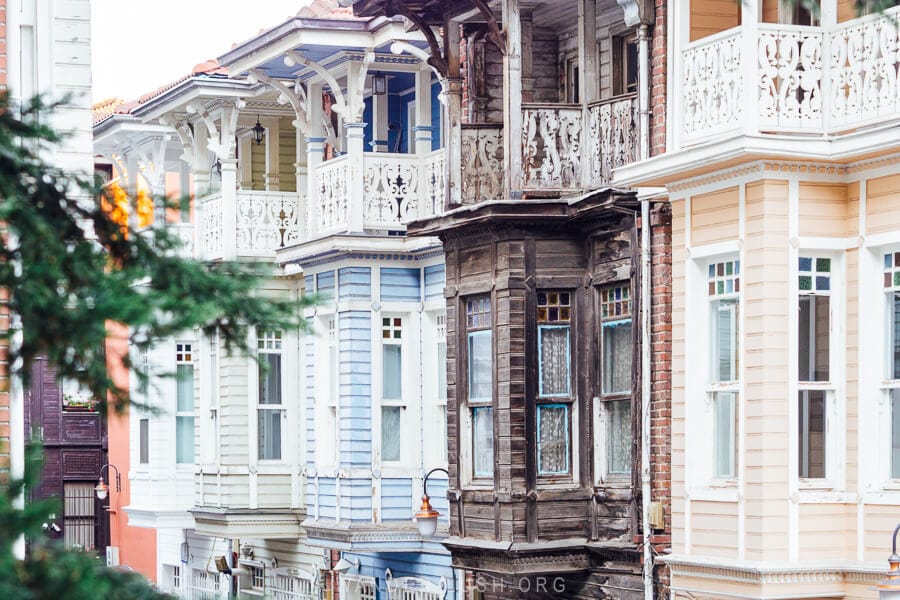
Arnavutkoy is small enough that you can examine each and every Ottoman mansion within a couple of hours. I zig-zagged my way around on foot – some of the higher streets turn into staircases that afford lovely views of the Strait, others are dead-ends that only lead to gated mansions.
Other things to see and do in Arnavutkoy
Arnavutkoy is a small, laid-back suburb. There are not many ‘attractions’ aside from the architecture, but that’s precisely what makes it so lovely.
Every Arnavutkoy backstreet has its treasures, be it a picture-perfect cafe, a colourful staircase or a stunning viewpoint, or something as simple as a quaint letter box, planter or perfectly positioned bicycle.
A leisurely stroll is the best way to explore the area.


Here are a couple more points of interest to guide your walk:
Directly opposite the ferry terminal, you’ll find a little town square with a bronze bust of Ataturk. As you walk, you’ll notice more effigies of modern Turkey’s founding father scattered around Arnavutkoy. Several outdoor cafes ring the park.


To the east, the Greek Orthodox Church of Taksiarkis (Arnavutköy Aya Strati Taksiarhi Rum Ortodoks Kilisesi) has a massive footprint and is impossible to miss. Built in 1899 from plaster and cut stone, the gold-tinted chapel is still an active place of worship and hosts a Divine Liturgy every Sunday. Visitors are welcome to join Arnavutkoy’s small surviving Orthodox community in worship.
A few blocks away, closer to the waterfront, Arnavutkoy Tevfikiye Mosque, built in 1832 and recently restored, features an elevated terrace with commanding views of the Bosphorus.
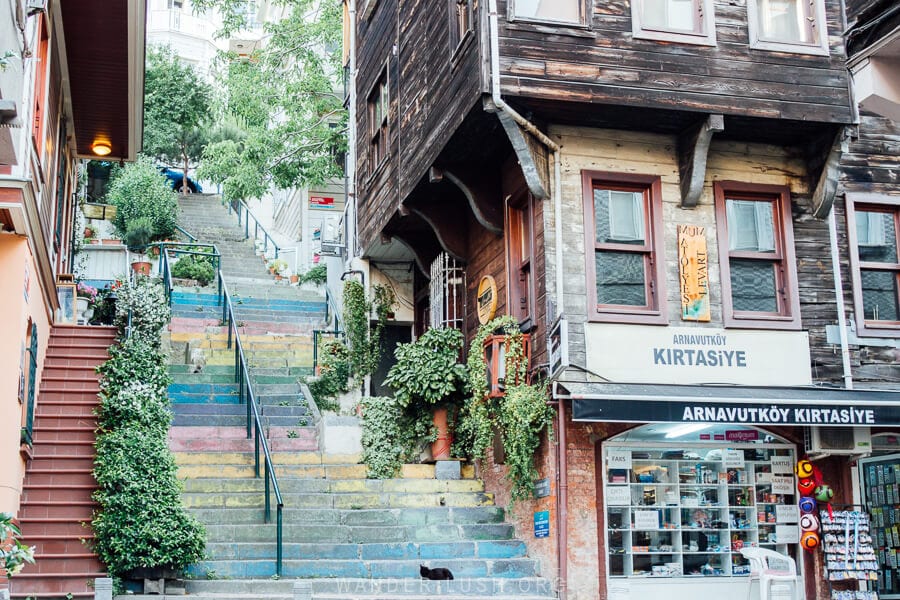
Further inland, there is a Jewish Cemetery and a Rum Mezarlığı, where members of the Greek community were laid to rest.
No matter where your wanderings take you, aim to be back on the waterfront to watch the sunset on Akintiburnu (the Cape of the Current). Animated fishermen leap and bound across the wide pavement, vying for the perfect spot to cast their long rod into the gentle surf.
Blue hour casts a splendid light on the houses and makes the canal shimmer.

Where to eat and drink in Arnavutkoy
Weber’s Arnavutkoy – We only had one meal in Arnavutkoy, and we went for this trendy restaurant-bar with a pleasant outdoor courtyard. Beer is on tap, and the Isli Nachos with yogurt and paprika are perfect for a light afternoon snack.


Hide Arnavutkoy – This restaurant with a ‘secret garden’ offers brunch and specialty coffee. Find it in the eastern part of the neighbourhood, close to the mosque.
A Bit Of Eggo – This popular all-day breakfast joint does organic eggs a thousand ways.
Yali Arnavutkoy – An intimate alternative to the big fish restaurants on the waterfront, this bistro has the same sea views plus a lovely interior and a full menu of fresh seafood specialties.
How to get to Arnavutkoy
Arnavutkoy has its own ferry terminal, Arnavutkoy Iskelesi, but boat services are infrequent.
A more convenient way to reach Arnavutkoy is by bus via Besiktas. Several city bus routes travel up the coast from the Naval Museum, stopping right in front of Arnavutkoy Square.
The trip takes around 15 minutes – but be warned that this road is extremely busy during peak hour and it can take an hour or more to get out of Arnavutkoy in the early evening.
Google Maps works perfectly for navigating public transport in Istanbul.
After Arnavutkoy, you can continue up the Bosphorus to visit Rumeli Fortress, or travel back down to Besiktas for some of Istanbul’s best street food and access to the Asian side via the Uskudar ferry.
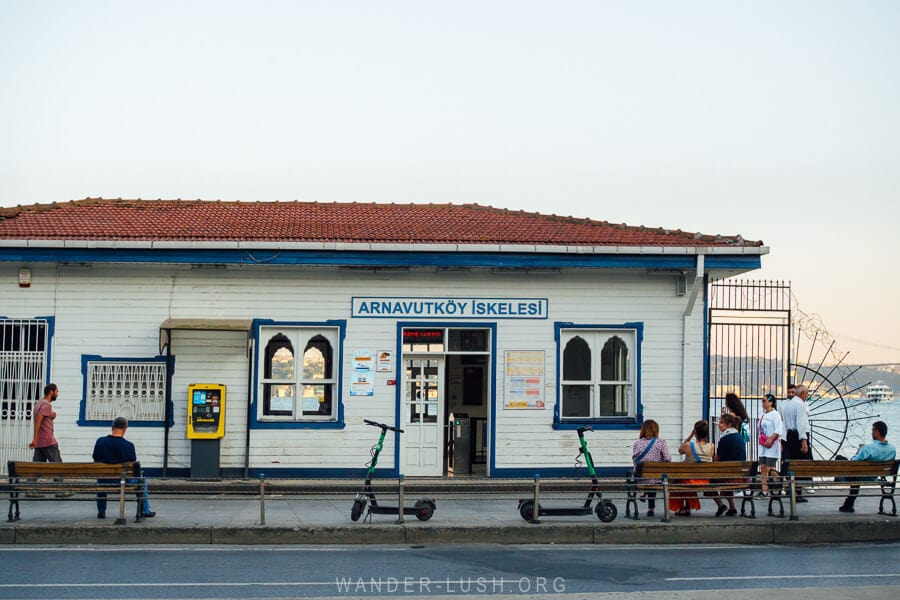
Where to stay in Istanbul
Budget: Hostel Le Banc (⭐ 9.5) – This popular hostel in Beyoglu is footsteps from the Galata Tower and Sishane metro station. It features air-conditioned rooms (private doubles and mixed/all-female 4 and 10-bed dorms), a shared lounge and a terrace.
Mid-range: 38 Hotel (⭐ 8.6) – Located in Sisli, close to Osmanbey metro station, this hotel has compact, tidy double rooms and suites.
Boutique: Hotel Empress Zoe (⭐ 9.2) – This gorgeous boutique hotel is decorated with heritage flourishes and boasts hammam-like ensuites and private internal terraces. The location in Fatih, minutes from Sultan Ahmet Mosque and the Blue Mosque, is very central yet the hotel still feels secluded.
Luxury: Ecole St. Pierre Hotel (⭐ 9.5) – Located in Beyoglu close to Galata Tower, this boutique-luxury hotel offers high-end suites with private courtyards and terraces. The building, an old Italian Dominican school with remnants of the 13th-century Galata walls inside its courtyard, is dripping with history.
Turkey essentials
Here are some of the websites and services I recommend for planning a trip to Turkey. Remember to check out my full list of travel resources for more tips.
FLIGHTS: Find affordable flights to Turkey using the Skyscanner website.
VISAS: Use iVisa to check if you need a tourist visa for Turkey and apply for an expedited visa online.
DOCUMENTATION: Use OneWayFly to obtain proof of onward travel/hotel reservation for your visa application.
TRAVEL INSURANCE: Insure your trip to Turkey with HeyMondo, my preferred provider for single-trip and annual travel insurance.
CAR HIRE: Use the Local Rent platform to hire a car from a local agent. Prices start from as little as 18€ per day.
ACCOMMODATION: Find the best Turkey hotel deals on Booking.com.
CITY TOURS & DAY TRIPS: Browse the Viator website to find the best itineraries and prices for Istanbul food tours, Cappadocia balloon rides and more!
More Istanbul travel resources
- 4-day Istanbul itinerary
- 40+ things to know before you visit Istanbul
- Prices in Istanbul: Travel budget guide
- Tips for visiting Galata Tower for Istanbul city views
- The best Whirling Dervishes ceremony in Istanbul
- The ultimate guide to Istanbul street food
- The most beautiful places to visit in Turkey
- Where to go in Turkey in winter
Hi Emily
My 1st visit to Istanbul was in 1989 and have been there 5 times in total. It’s my fav city in the whole world. And Turkey is my fav country to visit (although I haven’t been back since 2022)
It was wonderful to come across this info about Arnavutkoy. I’ve never been there. So thankyou for me giving me a reason to book another trip to Istanbul one day. The article was great and your lovely photos show skilful composition. Well done on all counts & thx again Emily.
Cheers
Marco.
PS If you ever want to go back to Turkey one day please reach out and I would be happy to send you some tips for the lesser visited places
Thanks to you I have tourist visitors at my local bag shop Çuval. One of them showed me your website that’s how was informed. Let me know if you want to add shops and restaurants for Arnavutköy. All best, Ayse
Terrific to hear that Ayse! I’m sorry I missed out on visiting you – your bags look incredible! Hope to meet you next time I’m in Istanbul!
Hi Emily. I found this post on Pinterest, and just loved it. I’ve been to a few cities in Turkey, but never to Istanbul. I had seen so many YouTubes about it, but had no desire to go, until now. You’ve inspired me with the beautiful area of Arnavutkoy. Thank you for sharing.
So glad to hear that Christina! I’ve only been to Istanbul! Hehe, I really want to see more of Turkey. I’d love to hear your tips!!